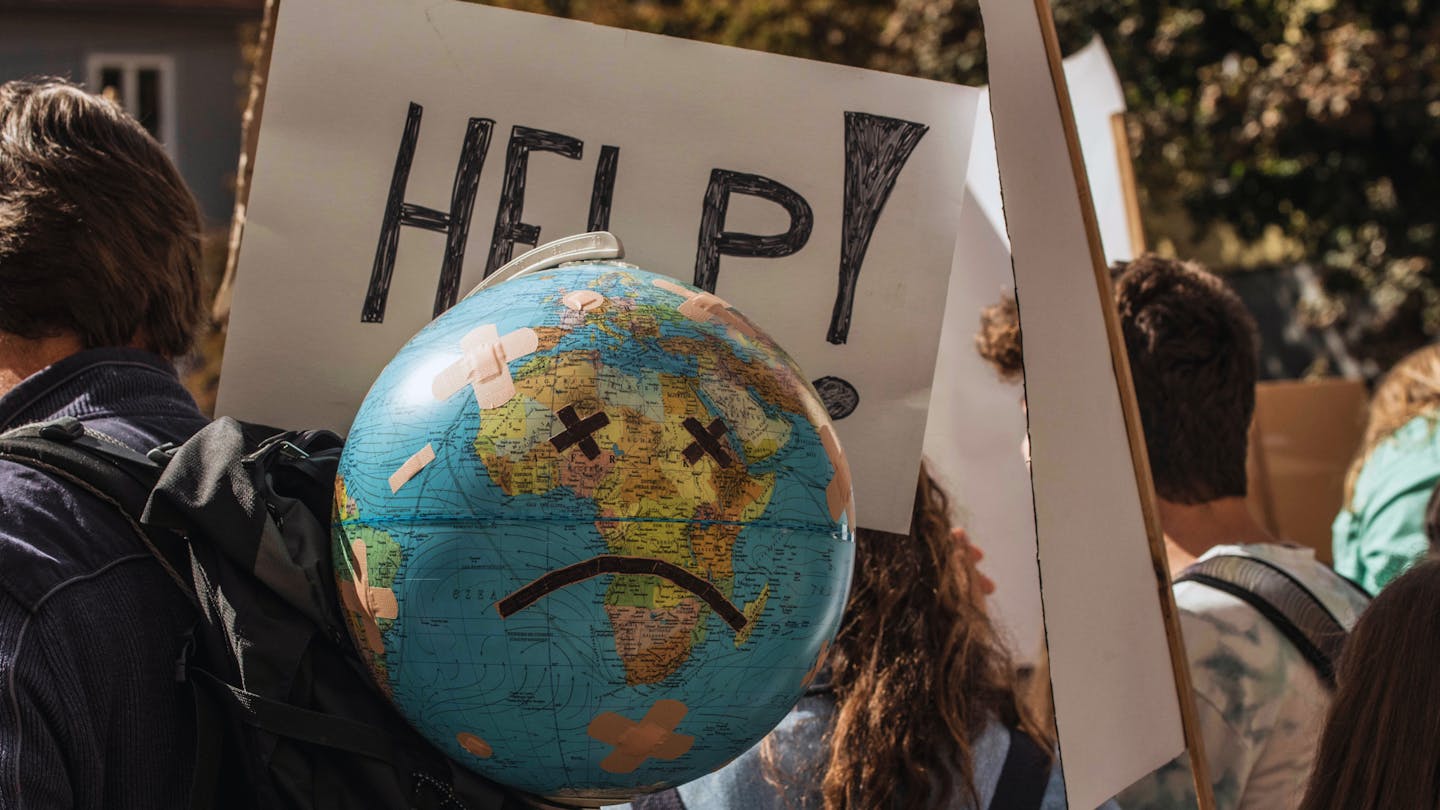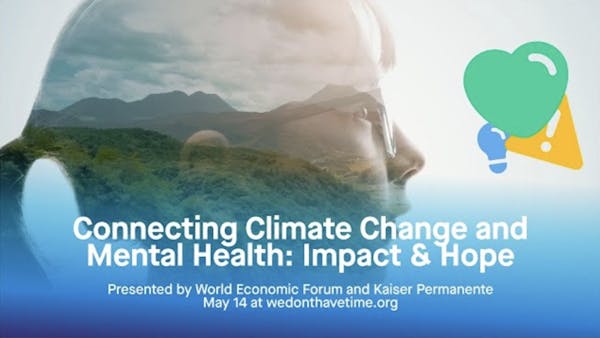What is eco-anxiety, and how do we ease it?
In today’s fast-paced world, it’s easy to feel overwhelmed. From climate change to economic instability, and even the constant barrage of negative news on social media, it can seem like there’s no escape from stress and anxiety.
For many, this stress is compounded by the deep concern for our planet and the impact humans are having on it. This feeling has a name: eco-anxiety. But while the problem may seem insurmountable, there are ways to manage this anxiety and turn it into action.
What is eco-anxiety?
Eco-anxiety refers to feelings of extreme worry about current and future harm to the environment caused by human activity and climate change. It is a growing mental health concern affecting people of all ages, particularly the youth
A recent US survey found that 85% of young people (ages 16-25) report feeling anxious about climate change, and nearly half say it negatively impacts their daily lives.
The term "eco-anxiety" was coined by philosopher Glenn Albrecht, who defined it as “a chronic fear of environmental doom.” This fear arises from witnessing the increasing severity of climate-related disasters—such as wildfires, floods, and rising temperatures—as well as ongoing deforestation, species extinction, and pollution.
Although eco-anxiety is not classified as a disorder, it is a natural response to the environmental challenges we face. However, it can often lead to feelings of powerlessness, guilt, and even hopelessness.
This anxiety is further intensified by doomscrolling, where constant exposure to negative news leaves individuals unsure of how to make a difference. However, there are clear paths forward and real solutions.
By focusing on taking actions and collective efforts, you can shift from feeling helpless to making a tangible difference for the planet.

Five actions you can take to ease eco-anxiety
By taking small, intentional actions, you can regain a sense of control and purpose. These steps not only help manage stress but also contribute to meaningful environmental change. Here are five practical ways to transform your concern for the planet into positive, impactful action:
1. Spend time in nature (personal impact).
Studies have shown that spending time in nature reduces stress and promotes mental well-being. Whether it’s a walk in the park, hiking, or simply being in your backyard, connecting with nature can help you feel grounded and remind you why protecting the planet is so important.
Even small moments of connection with nature can be transformative. Listening to birdsong, for instance, has been found to alleviate anxiety and improve mood. The gentle melodies of birds create a calming atmosphere, helping to lower cortisol levels and induce relaxation.
Spending time near water—whether it’s a lake, river, or ocean—can also have a positive impact on mental health. The sound of flowing water has been shown to trigger calmness, reduce heart rate, and improve mood.
Engaging with nature doesn’t have to mean traveling far. You can cultivate a small garden, sit under a tree, or take your work outdoors. These simple moments can anchor you to the present and provide respite from daily pressures.

Research shows that just two hours a week spent in nature significantly boosts health and wellbeing. Image credit: Anselm Baumgart from Getty Images
2. Change your daily habits to reduce your carbon footprint (individual impact).
Tackling climate change begins with the choices we make every day. By adjusting small habits in your daily routine, you can contribute to a larger collective effort.
Start by reducing your carbon footprint in simple ways—such as eating less meat, cutting down on food waste, and choosing more sustainable products. Opting for renewable energy sources, using energy-efficient appliances, or driving less can further decrease your environmental impact.
While these personal actions may seem small, they accumulate over time and, when replicated across communities, can lead to significant change. It’s about progress, not perfection—what’s important is to start somewhere.
For more ideas, One Earth’s 101 Climate Solutions You Can Do at Home offers a range of practical suggestions, from thrift shopping and reducing water usage to making your garden pollinator-friendly.
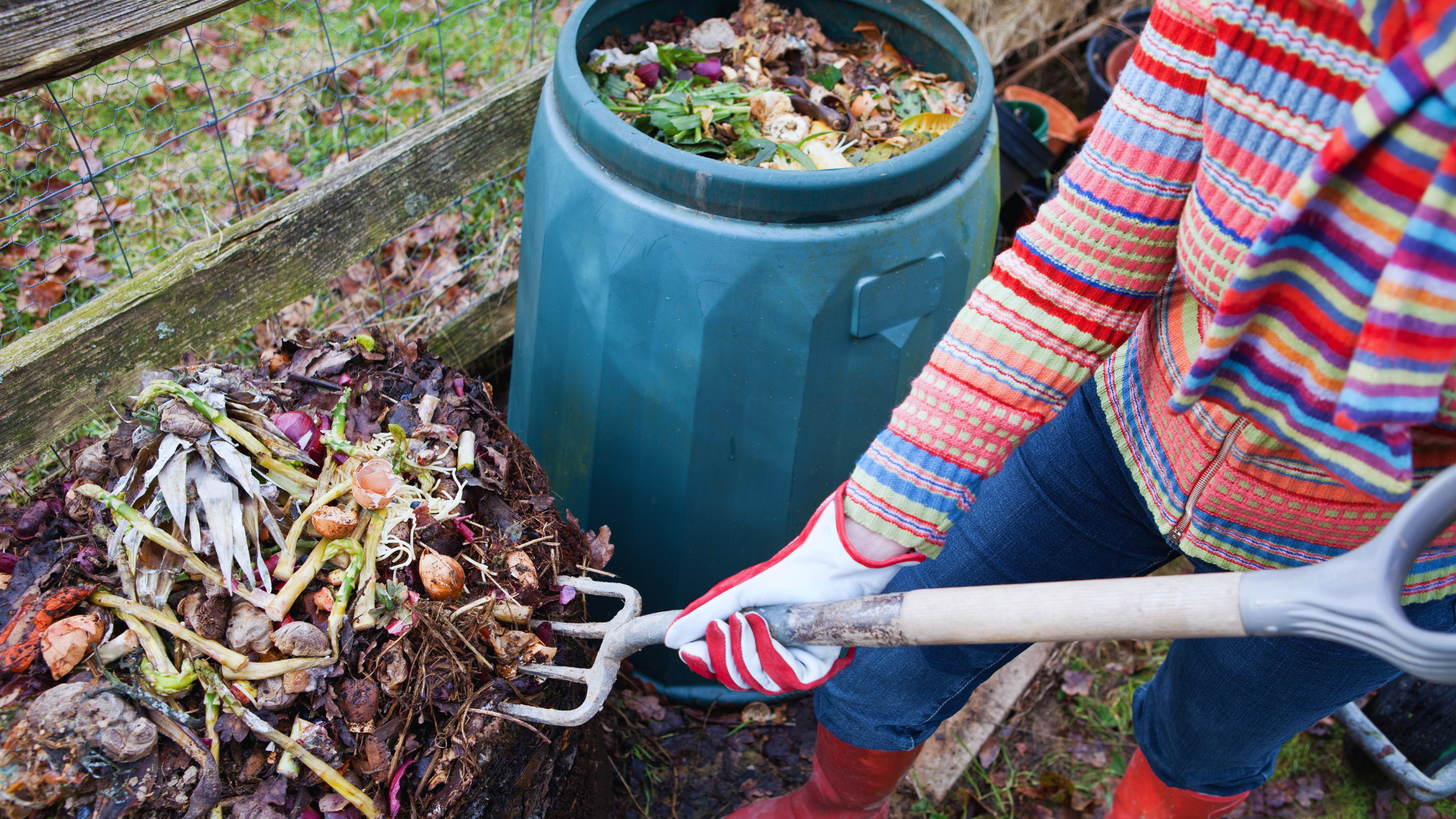
Composting diverts food waste from landfills, where it would otherwise decompose and produce methane—a greenhouse gas 25 times more potent than carbon dioxide. Image credit: CJP from Getty Images
3. Find your eco-community (local impact).
Eco-anxiety can feel deeply isolating, as it’s easy to believe you’re shouldering the weight of the climate crisis alone. However, finding a community of like-minded individuals can be a powerful antidote to these feelings.
Joining a community not only provides emotional support but also opens up opportunities for learning, collaboration, and collective action. You can get involved with climate-focused groups that are driving real change, attend local events such as sustainability fairs, or participate in neighborhood initiatives like community gardens, tree planting, or clean-up drives.
Many people also find virtual communities and forums dedicated to climate action to be excellent resources for exchanging ideas, sharing progress, and finding motivation.

A study led by the Yale School of Public Health found that collective action can serve as a potential buffer against the impacts of eco-anxiety. Image credit: Courtesy of David Pereiras
4. Turn local action into widespread change through civic engagement (national impact).
Civic engagement is a powerful tool for alleviating eco-anxiety. Signing petitions, participating in peaceful protests, and, most importantly, voting for leaders who prioritize climate solutions can make you feel like part of the change. Advocacy transforms anxiety into action.
When you sign a petition, you add your voice to a collective effort demonstrating public support for environmental causes. Online petitions can make a real difference by raising awareness, applying pressure to policymakers, and showing that people care about pressing issues. Websites like Avaaz and Change.org make it easy to find and support initiatives that align with your values.
Peaceful protests and climate marches are another impactful way to take a stand. Joining others in a public demonstration can be an empowering experience that fosters solidarity and hope. It offers an opportunity to connect with those who share your concerns, amplifying your collective message. Events like the Global Climate Strike have drawn millions of participants worldwide, creating pressure for policy change and making climate action a central topic of conversation.
Voting is perhaps the most significant action you can take. By supporting candidates and leaders who prioritize climate action, you help shape policies that address environmental issues at a systemic level. Researching candidates' platforms and voting in every election—local, state, and national—ensures that climate remains a top priority. Remember, change often starts from the bottom up, and local elections can have a profound impact on environmental policies in your community.
In addition to these actions, directly contacting your representatives is a powerful way to make your voice heard. Writing letters, making phone calls, or even meeting with policymakers can influence their decisions and show that their constituents deeply care about climate issues. Advocacy groups like Citizens' Climate Lobby offer resources to help individuals effectively communicate with their representatives.
By getting involved in these ways, you can turn feelings of eco-anxiety into proactive efforts for change. Civic engagement not only contributes to meaningful action but also helps you feel more connected and empowered.
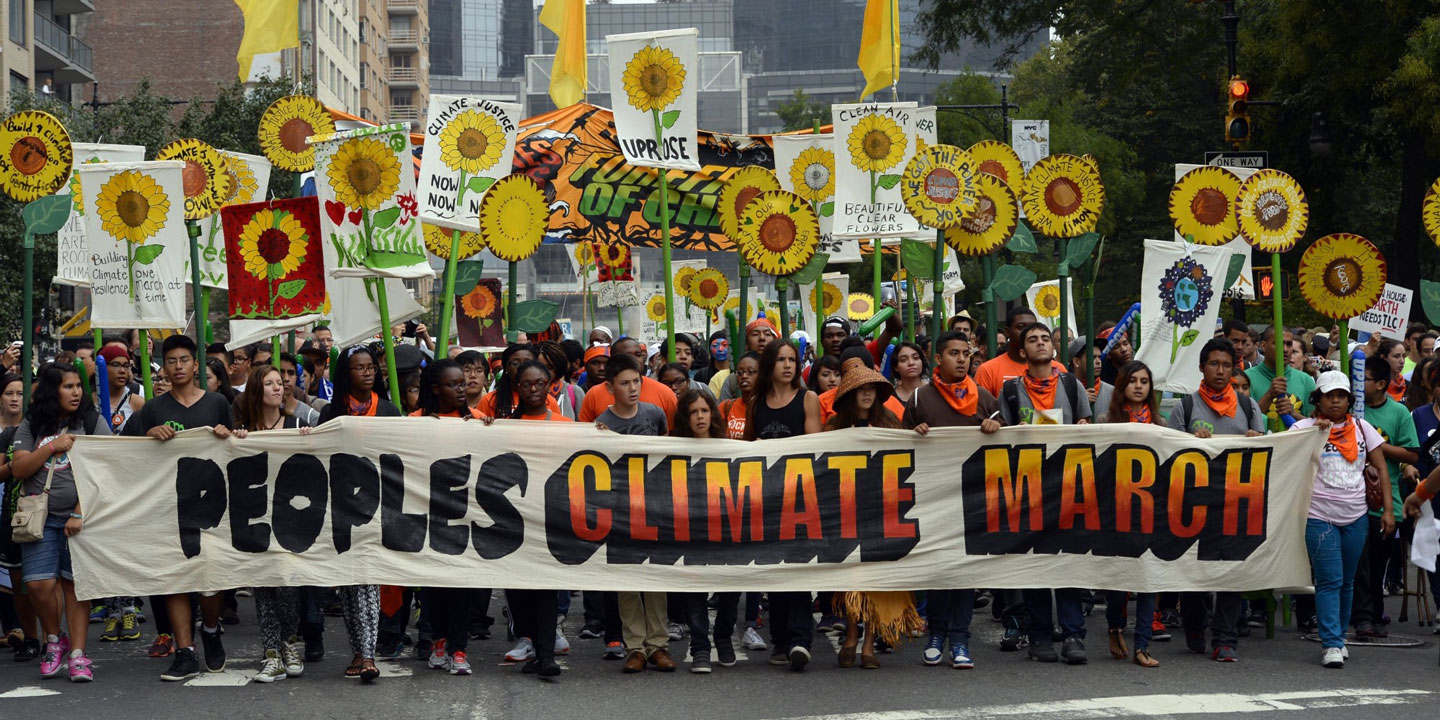
People's Climate March NYC. Image credit: Stephen Melkisethian, Flickr
5. Support solution-focused organizations (global impact).
Environmental nonprofits receive just 2% of all charitable dollars, which makes supporting them even more crucial. Whether through donations or by amplifying their message, contributing to these organizations can make a significant difference.
If you have the means, consider donating to environmental nonprofits—like us at One Earth! By supporting organizations dedicated to combating climate change, you help fund crucial research and conservation efforts, creating an impact that extends beyond individual actions.
Donations can be made as a one-time gift or set up as recurring monthly or yearly contributions. Every bit helps, and consistent support ensures these organizations can continue their vital work over the long term, increasing their positive impact.
If financial contributions aren’t possible, you can still make a difference by following, sharing, and engaging with solution-focused organizations on social media. Liking, sharing, and commenting on posts helps amplify their message and reach a wider audience, transforming your social media feed into a platform for hope and climate action.
By supporting these organizations in any way you can, you help drive meaningful change on a global scale.

One Earth protest sign in action. Image credit: Shaunl from Getty Images
How One Earth is tackling eco-anxiety with collective action.
At One Earth, we believe that collective action is the most effective cure for eco-anxiety. Through actionable tools, accessible science, and inspiring stories, we aim to make it easier for people to get involved and become part of the solution.
The One Earth Solutions Framework
The One Earth Solutions Framework is a scientifically grounded roadmap that identifies over 70 key solution pathways to tackle climate change, biodiversity loss, and global food security. Organized across three pillars—energy transition, nature conservation, and regenerative agriculture—this framework outlines actions that can limit global temperature rise to 1.5°C while addressing critical biodiversity challenges such as deforestation and species extinction.
Developed with input from over 100 leading scientists, it answers essential questions on how to transition to renewable energy, protect our biosphere, and sustainably feed a growing population.
In addition to the three pillars, the framework identifies several levers of change to accelerate solution implementation and intersectional themes to ensure that people, especially marginalized communities, remain at the heart of the global transition.
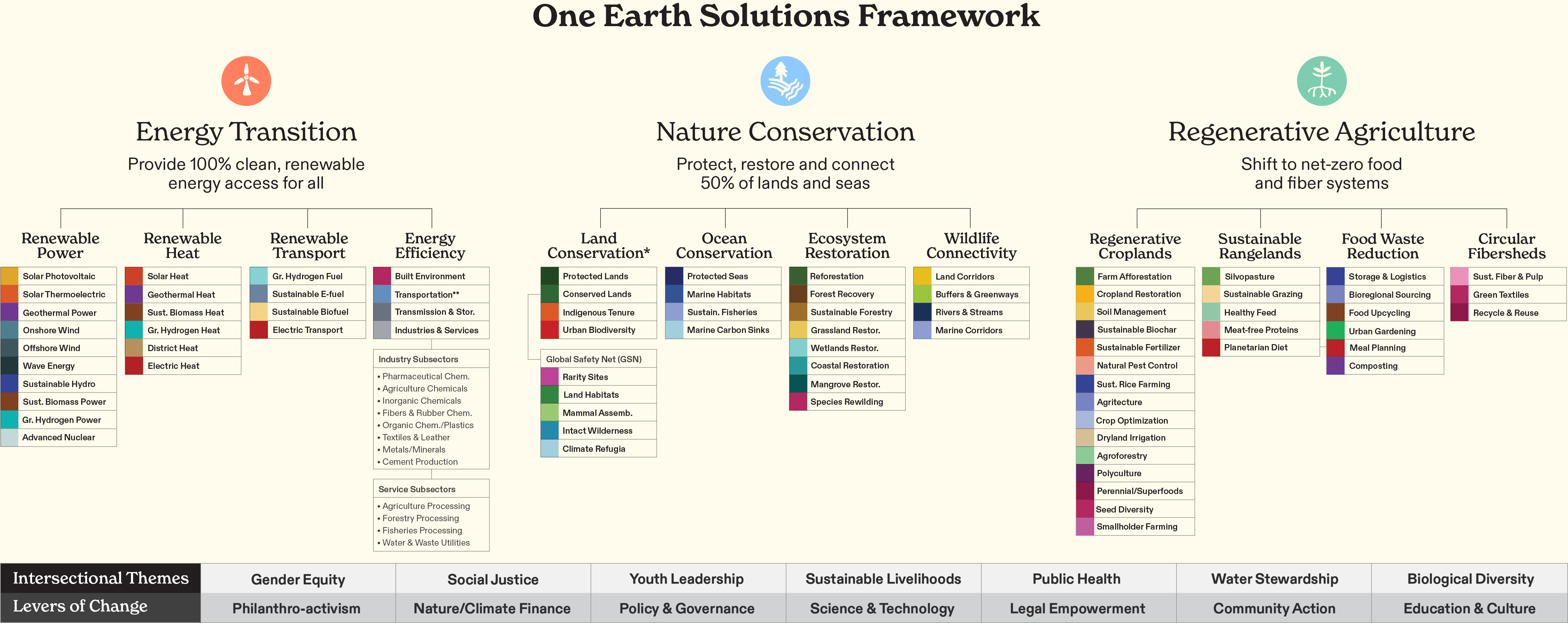
The One Earth Solutions Framework. Image credit: Karl Burkart, One Earth
Bioregions: A map of the world as if drawn by nature
The One Earth Bioregions Framework delineates the world into 185 distinct bioregions, offering a localized approach to tackling climate change and biodiversity loss. Instead of relying on man-made political boundaries, this framework reflects the natural divisions of Earth's ecosystems, making it easier for communities to take action within their own ecological contexts. By focusing on the unique characteristics of each bioregion, this approach helps identify place-based solutions that can better address environmental challenges at a regional level.
Organized by the world’s major biogeographical realms, the Bioregions Framework subdivides Earth's land surface into 14 realms, 53 subrealms, and 185 bioregions, each defined by its unique ecological characteristics and evolutionary history. This structure offers a clearer understanding of the interconnected web of life and highlights how targeted conservation efforts can drive both local and global environmental impact.
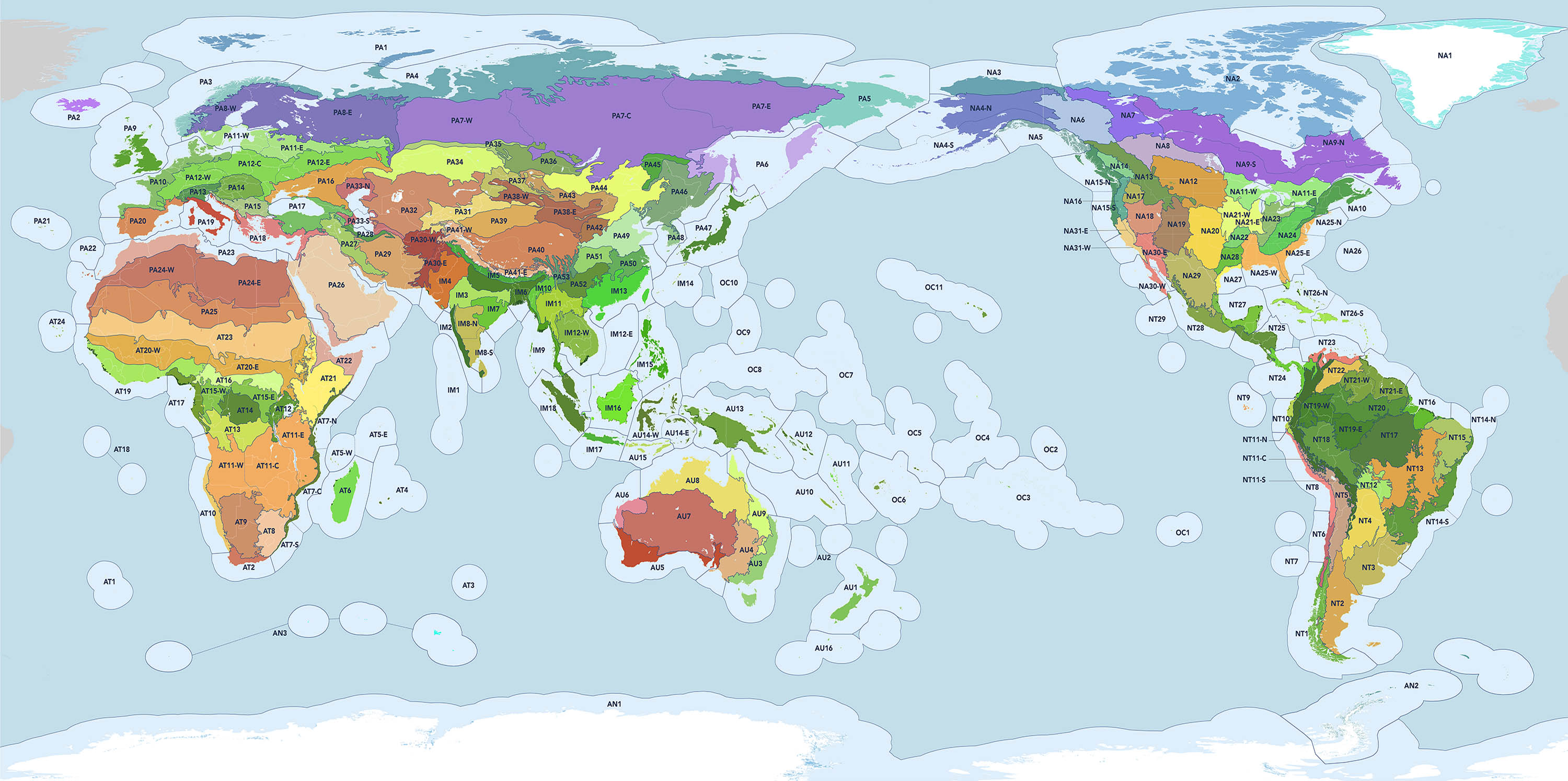
The One Earth Bioregions Framework: a new map of the Earth created by intersecting biomes with large-scale geological structures and ecoregional groupings to delineate 185 discrete bioregions. Download Map (6 MB). Image credit: Karl Burkart, One Earth
The Global Safety Net: A blueprint for saving life on Earth
The Global Safety Net (GSN) is a groundbreaking, science-based analysis that identifies 50% of the Earth’s land essential for preserving biodiversity and stabilizing the climate. Developed by One Earth in collaboration with leading research institutions, the GSN integrates global-scale data to map key conservation areas, including species rarity sites, intact wilderness, and climate stabilization areas.
This "blueprint" offers governments and organizations a guide to safeguarding ecosystems, reducing carbon emissions, and preventing biodiversity loss—all while emphasizing the critical role of Indigenous Peoples and Local Communities.
Crucially, the GSN advocates that no human displacement should occur to protect these areas, promoting a "common but differentiated" approach where each country contributes to safeguarding the biosphere based on its unique ecological context. As a tool for aligning conservation efforts with the goals of the Paris Climate Agreement and the UN Convention on Biological Diversity, the GSN provides a roadmap for achieving global climate targets and protecting critical ecosystems.
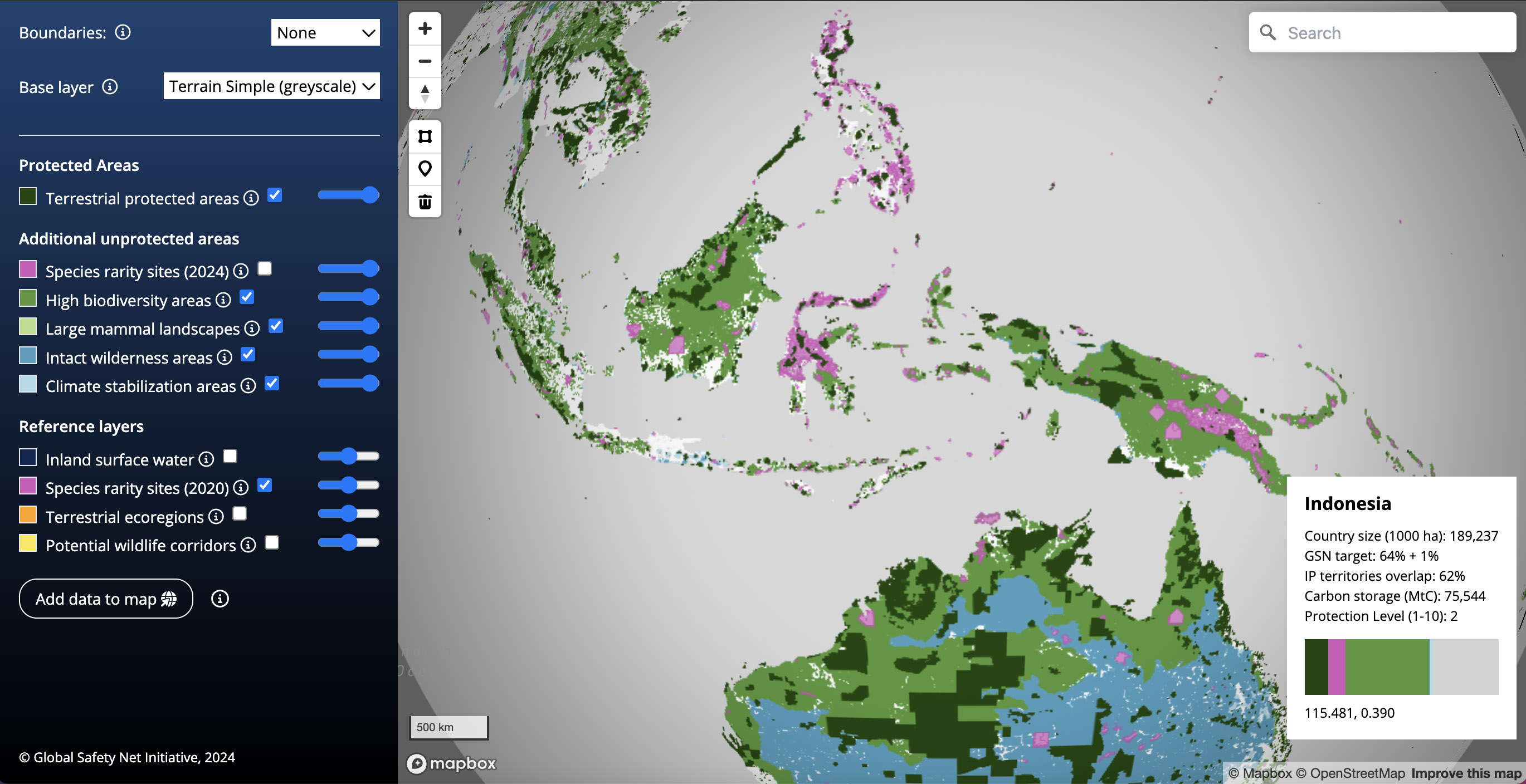
The Global Safety Net map viewer, showing rare species areas across Indonesia. Image from Global Safety Net (GSN) initiative.
One Earth's Inspiring Media Showcase
At One Earth, we are committed to uplifting the changemakers and the incredible biodiversity that defines our planet. Our social media and website content shine a spotlight on climate heroes and the critical role that species play in maintaining healthy ecosystems. By telling these stories, we aim to shift the narrative away from environmental doom and despair toward one of opportunity, resilience, and collective action.
Climate Heroes
Our Climate Heroes series celebrate individuals and communities who are leading the charge in conservation, climate action, and Indigenous rights.
For example, we recently featured Nemonte Nenquimo, an Indigenous Waorani leader who spearheaded a historic legal victory protecting over 500,000 acres of Amazon rainforest from oil extraction. Her leadership has inspired global support for Indigenous rights and protecting the Amazon Rainforest.
Another example is Jamiah Hargins, founder of Crop Swap LA, who is transforming urban agriculture in Los Angeles by turning unused spaces into micro-farms that provide fresh produce and green jobs to local communities.
Iconic Species
Our Iconic Species series is intertwined with the One Earth Bioregions Framework, showcasing how each species represents the unique ecology of its bioregion.
The scarlet ibis, with its vibrant red plumage, is the iconic species of the Amazon River Estuary bioregion (NT16), playing a critical role in maintaining the health of South America's mangrove ecosystems. This bird is also revered by Indigenous cultures like the Tupi, symbolizing the deep connection between biodiversity and the cultural identities that have flourished alongside these ecosystems for generations.
Similarly, the African wild dog, with its vibrant coats and social dynamics, is the iconic species of the Somali Bushlands & Ethiopian Highlands bioregion (AT21). These apex predators not only help maintain the balance of their ecosystemd, they are also celebrated in Indigenous cultures as a symbol of strength and unity.
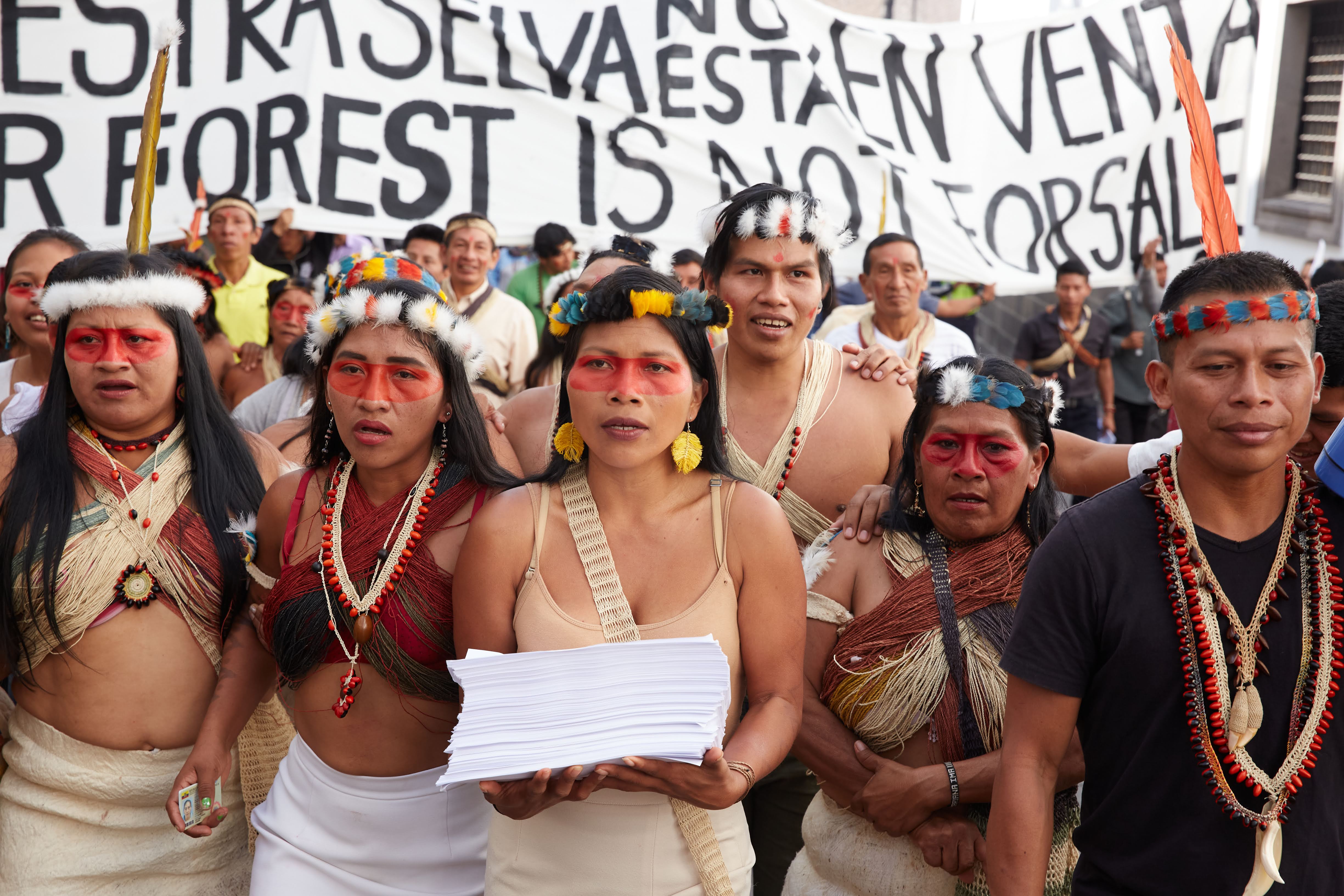
Climate Hero Nemonte Nenquimo’s global campaign, “Our Rainforest is Not for Sale,” united people worldwide, collecting over 378,000 signatures to protect Indigenous land from oil extraction. Image credit: Courtesy of Amazon Frontlines
Turn your eco-anxiety into climate action
While eco-anxiety is a natural response to the challenges we face, it doesn't have to be paralyzing. Taking meaningful steps—whether through personal actions, community involvement, or supporting impactful organizations—can help alleviate these feelings and empower us to become part of the solution.
At One Earth, we believe that climate action not only addresses the root causes of environmental degradation but also provides a powerful antidote to eco-anxiety. By offering clear, actionable tools and inspiring stories, we make it easier for individuals to engage in collective efforts that protect our planet and build a brighter future.
Together, we can turn fear into hope and anxiety into meaningful action for the Earth.
Support Climate Solutions